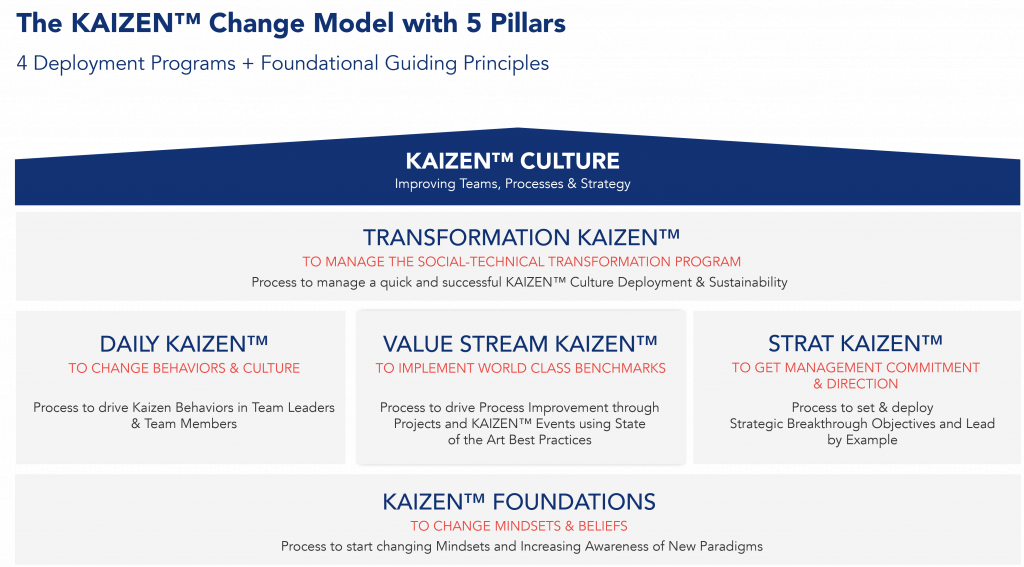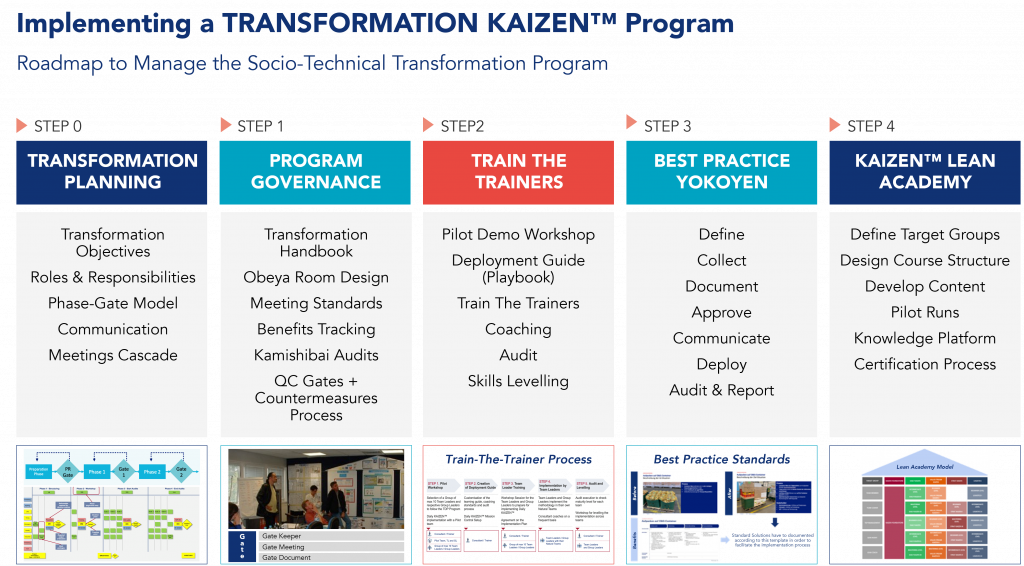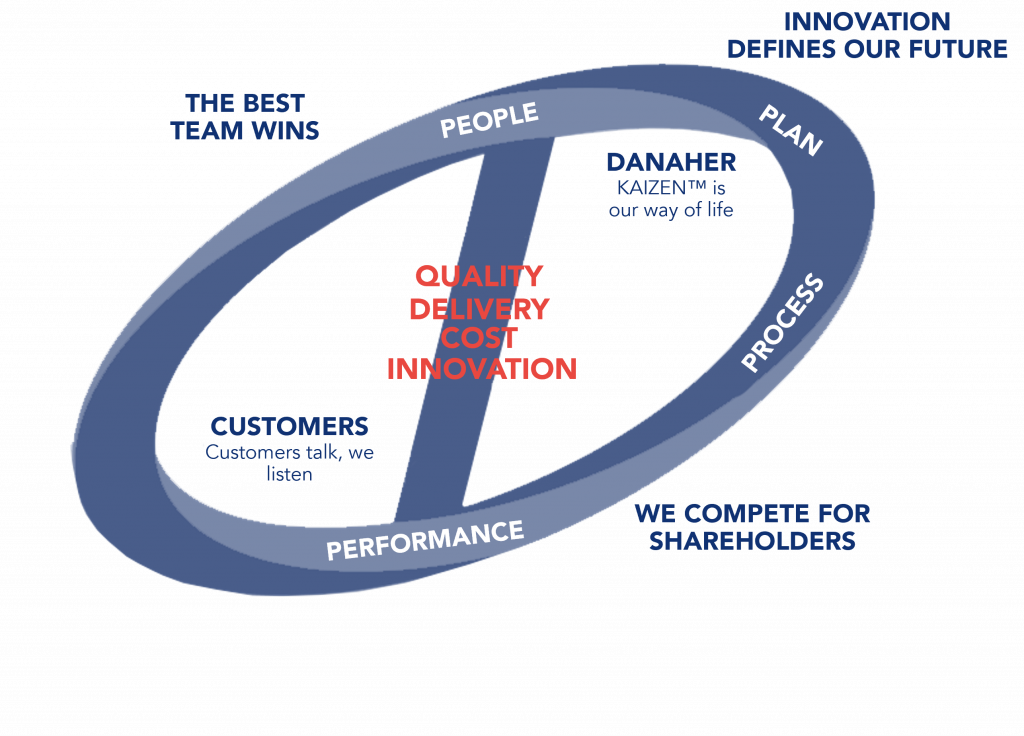Change Management should be a priority for any organization that wants to improve and grow continually. It helps organizations successfully implement operations, strategies, or systems changes. It involves planning, executing, and monitoring changes to minimize adverse effects on employees, customers, and businesses.
Understanding Change Management
All transformation processes are complex and require good change management skills. With 70% of transformations failing, resistance to change and management involvement are the top two contributors to this issue. The resistance to change is working in a vicious cycle against transformation. So, the way to enable change and culture improvement is to work on a good Change Management System.
Definition of Change Management
What is change management? Change management refers to preparing, planning, implementing, and tracking organizational or business changes in a structured and systematic approach. It involves identifying the need for change, developing a plan for implementing the change, communicating the change to relevant stakeholders, and monitoring and reporting the progress of the transformation.
The Role of Change Management in Organizations
Change management is crucial in organizations to ensure that transformations are controlled and do not negatively impact the overall performance and objectives of the organization and the people involved. Effective change management implicates understanding the impact of the change on people, processes, technology, and culture and taking measures to mitigate any potential adverse effects.
Change management exists in various areas of the organizations, such as new technologies, organizational restructuring, mergers and acquisitions, and lean transformation programs. We will focus on this last type of transformation in this article. Successful change management requires strong leadership, effective communication, stakeholder engagement, and a well-planned and executed strategy.
The Change Management Process
As mentioned in this article, we will approach change management, focusing on implementing continuous improvement projects, programs, and culture. The change management process plays an essential role in this type of program since the goal is to get the whole company to improve continually.
Many companies fail to implement Kaizen Lean transformations programs, and the reasons can be varied:
- Lean pilots often show promising results, but more than 80% of companies fail when trying to deploy them for the company.
- Finance directors rarely see a real impact on P&L coming from lean initiatives.
- Too many initiatives or wrong initiatives at the same time.
- Seeing lean as a toolkit only and not as a socio-technical system.
- Lack of leadership development at all levels.
- Lack of senior leadership engagement or no commitment from the organization to change.
For the success of the improvement programs, it is necessary to define countermeasures to these problems:
- Top Management Commitment: be present at the established meetings, visit the Gemba (where value is created), perform a coaching approach (leader vs. boss), and invest Resources and capacity in the transformation process.
- Encourage the Lean mindset: everyone, every day, in every place.
- Respect the Communication Model (follow-up meetings, steering committees, and others) and make data-based decisions.
- Prioritize initiatives and have them well structured (scope well defined, clear objectives, clear baseline, PDCA, lessons learned, and follow-up).
- Test before rejecting an idea. All ideas are valid and generate new opportunities.
- Excel in Change Management through best-in-class communication and the involvement of people with a phase-gate change process.
Change Management Models and Frameworks
Change management models and frameworks guide organizations through the transformation process. Several models and frameworks are applicable, each with strengths and weaknesses.
Kaizen Institute has developed its own Change Management Model that can be seen as a macro model applicable to any organization, regardless of its sector of activity or size. It is a widely recognized and used model for continuous improvement management.
Implementing a transformation program requires a structured process that allows the implementation of improvements to be made effectively and sustainably over time. For this, it is necessary to develop activities such as:
- Define a strategy, objectives, and governance model.
- Define a support team with roles and responsibilities.
- Design the phase-gate deployment program.
- Define a structure for knowledge management and training.
- Design a communication and deployment process.
- Design an audit and reporting system.
The following image represents the KAIZEN™ Change Model, designed to support change in KAIZEN™ transformation programs.

The model consists of 5 pillars:
- TRANSFORMATION KAIZEN™ to manage the social and technical transformation program: process to manage a quick and successful continuous improvement culture deployment and sustainability.
- DAILY KAIZEN™ to change behaviors and culture: Process to drive KAIZEN™ behaviors in team leaders and members.
- VALUE STREAM KAIZEN™ to implement world-class benchmarks: Process to drive process improvement through projects and events using state-of-the-art best practices.
- STRAT KAIZEN™ to get management commitment and direction: Process to set and deploy strategic breakthrough objectives and lead by example.
- KAIZEN™ FOUNDATIONS to change mindsets and beliefs: Process to start changing attitudes and increasing awareness of new paradigms.
In the next topic, we will address in more detail the TRANSFORMATION KAIZEN™ pillar because it is responsible for managing the transformation program.
Key Steps in implementing the Change Management Process
Change management is a structured approach to transitioning individuals, teams, and organizations from their current state to a desired future state. It involves processes, tools, and techniques for managing the people side of change to achieve business outcomes.
Next, we will present the critical steps in implementing the TRANSFORMATION KAIZEN™ process. The model has five steps, which together support change management.

Next, we will describe in more detail the KAIZEN™ Change Management steps:
Step 0: Transformation Planning
- Transformation objectives: Define transformation goals and design a continuous improvement implementation model adapted to the organization’s reality with corporate and department activities.
- Roles & Responsibilities: Definition of the organizational change management structure needed to implement the continuous improvement model (roles, responsibilities, profiles, and resources).
- Phase-gate Model: Define the transformation roadmap tailored to each company’s case with a specific phase-gate program.
- Communication & meeting cascade: Design the communication model for the entire organization and the cascade of meetings.
Step 1: Program Governance
- Obeya Room (“big room”) or Mission Control: The Obeya Room shows the status of the multiple initiatives and ensures the program’s implementation transparency.
- Meeting Standards: Define meeting standards (agendas, participants, place) for all the cascade (local, regional, national, and international meetings)
- Benefits Tracking: The different events’ owners should audit the project results. Each business unit owner should perform a monthly follow-up of the KPIs from each event to check if the results are stable and turn into financial results. The corporate CFO must summarize and audit the entire company’s results.
- Audits & Process Control: Kamishibai Audit (Frequent review of practices using visual management to reflect results and identify points to reinforce. The auditors are the natural leaders from different hierarchical levels.) Change Management Model Audit (Audits carried out semi-annually or annually. The auditor is the KAIZEN™ lean coach or the corporate support team.)
- Quality Gates and Countermeasures Process: Define and execute quality control checkpoints (gates) and countermeasures process.
Step 2: Train the Trainers
- Pilot demo workshop: Selection of a group of team leaders to implement and test the standard team development program.
- Deployment guide: Customization of the learning guide (playbook), coaching standards, and audit process according to the pilot results.
- Train the trainers: Workshop session for the team and group leaders to prepare for execution and agree on the implementation plan.
- Coaching: Team and group leaders implement the methodology in their natural teams. Consultant coaches frequently.
- Audit: Audit execution to check the maturity level of each team.
- Skills leveling: Workshop for leveling the implementation across teams.
Step 3: Yokoten (Best Practice Sharing)
- Define: Define the best practices and standard solutions implementation model.
- Collect: Collect best practices with impact and identified standard solutions.
- Document: Prepare best practices and standard solutions for implementation – before vs. after process and benefits.
- Approve: Approve final documents, define the global financial target to achieve through standard solutions, and define auditing timings.
- Communicate: Share final documents and communicate with stakeholders.
- Deploy: Implement the solutions.
- Audit & Report: Audit implemented standard solutions and financial impact. Define overall audit conclusions. Make a local and aggregated report.
Step 4: Kaizen Lean Academy
- Define target groups: Define target groups, considering their role, hierarchical level, and department.
- Design course structure: Define the structure of the courses that the academy will make available to the various groups.
- Develop content: Develop training programs including a theoretical and a practical component.
- Pilot runs: Conduct pilots to test the format, content of courses, and effectiveness in developing new skills.
- Knowledge platform: Develop a platform for sharing knowledge for the trainers and trainees.
- Certification process: Develop a certification process that allows knowing at any time the level of training and knowledge of each employee in each topic.
Overall, Change Management models and frameworks can help guide organizations through the change management process. However, it is essential to remember that every organization is unique and may require a customized approach to change management.
Change Management in Different Industries
As said above, change management is essential in all industries to help organizations adapt to new processes, market conditions, technologies, or organizational models. Here are a few application examples of change management in different industries:
- Manufacturing: Change management is vital to optimize production processes, reduce waste, and improve quality. Implementing new processes or equipment requires careful planning, testing, team involvement, and training.
- Retail: Change management is crucial in the retail industry to adapt to changing consumer trends and preferences and to improve processes. Retailers must monitor the market and consumer behavior changes and respond quickly by adjusting product offerings, marketing strategies, and supply chain operations.
- Logistics: Change management in logistics involve the process of planning, implementing, and managing changes in a logistics system or process to reduce lead time, transport costs, and customer complaints and to improve service level and productivity.
- Healthcare: Change management is essential in the healthcare industry to implement new technologies, procedures, and regulations smoothly and safely. For instance, when introducing new medical equipment, processes, or software, healthcare organizations must ensure that staff is trained and equipped to use them effectively without harming the patient.
- Construction: Change management is an essential aspect of construction management. It involves systematically planning, preparing, and implementing changes within a construction project to ensure its success. Change management in construction involves handling improvements in the project scope, design, schedule, budget, and other critical elements that affect the project’s success.
- Information technology: Change management is critical in the IT industry to minimize the risk of system downtime, security breaches, or data loss. Software, hardware, or network infrastructure changes must be tested and approved before implementation, and staff must receive training to use new systems and tools.
In summary, change management is essential in various industries to facilitate and manage change effectively, minimize risks, and ensure that organizations can adapt to new challenges and opportunities.
Danaher and Change Management
Danaher Corporation is a global science and technology company widely recognized for successfully implementing change management practices. The company has a well-established reputation for continuous improvement and has implemented the Danaher Business System (DBS) for over 30 years. Danaher change management approach emphasizes the importance of building a culture of continuous improvement and learning.
Danaher’s Approach to Change Management
Danaher Business System (DBS) is a comprehensive and integrated set of tools and processes that Danaher uses to drive continuous improvement across its businesses. DBS foundations are the principles of lean manufacturing and KAIZEN™, designed to help companies identify and eliminate waste, improve quality, increase efficiency, and innovate. DBS implementation involves a structured training program and all employees, from frontline workers to senior leaders.

Danaher describes on its website, “The DBS engine drives the company through a never-ending cycle of change and improvement: exceptional PEOPLE develop outstanding PLANS and execute them using world-class tools to construct sustainable PROCESSES, resulting in superior PERFORMANCE. Superior performance and high expectations attract exceptional people who continue the cycle. Guiding all efforts is a simple philosophy rooted in four customer-facing priorities: Quality, Delivery, Cost, and Innovation.”
Here are some key factors that have contributed to Danaher’s change management success:
Clear Vision and Strategy
Danaher’s leadership team has a clear vision and strategy for the company’s growth and development. The company has a well-defined roadmap for achieving the goals that it communicates to all employees. The company is committed to continuous improvement and can execute its strategy effectively.
Leadership Development
Danaher invests heavily in the development of its leaders. The company’s rigorous leadership development program prepares its leaders to lead change and manage complex projects. The leaders focus on a clear vision and can effectively communicate it to their employees, stakeholders, and customers.
Continuous Improvement and Innovation
Danaher’s culture uses the foundations of the continuous improvement principles of KAIZEN™. The company encourages its employees to constantly look for ways to improve and innovate processes, products, and services. This continuous improvement focus has helped Danaher stay ahead of its competitors and drive long-term success.
Data-Driven Decision-Making
Danaher uses data to drive decision-making at all levels of the organization. The company has a robust data analytics platform that provides real-time insights into operations, enabling it to identify areas for improvement. The company collects and analyzes data to drive continuous improvement and make informed decisions to help ensure data-based changes rather than gut-based changes.
Employee Engagement
Danaher’s change management success is also the result of employee engagement. The company values its employees and provides them with the necessary resources and support to drive change. Danaher encourages a culture of collaboration, where employees are empowered to contribute ideas and suggestions for improvement.
Communication
Danaher places a strong emphasis on communication. The company ensures that all employees are informed about changes and updates through regular communication channels.
Overall, Danaher succeeded in change management due to strong leadership, clear strategy, data-driven decision-making, employee engagement, and a focus on continuous improvement.
Similarities between Danaher’s Strategy and Kaizen’s Change Management Principles
For all mentioned above, it is easy to see many similarities between Danaher’s Strategy and Kaizen’s Change Management Principles.
These similarities are due to the strong influence that Kaizen principles had on DBS. Danaher took its first steps with KAIZEN™ methodologies in 1988 by successfully implementing Toyota’s Lean manufacturing. From 1986 to 2000, Danaher expanded from 16 to 51 companies. Along with all the business transformation, what started as an implementation of Lean manufacturing, evolved into a KAIZEN™ system encompassing continuous quality improvement tools and principles.
The DBS was the basis of the firm’s continual success. Danaher uses DBS to guide what they do, measure its execution, and create options for doing even better.
The power of training in change management
Training plays a vital role in change management by equipping employees with the knowledge, skills, and tools to adapt to new situations, technologies, or processes. Here are some ways training can be powerful in change management:
Builds awareness
Training can help employees understand the need for change, the reasons behind it, and the benefits that it will bring. This understanding can help build support for the change and reduce resistance.
Develops new skills
Training can help employees develop the skills and competencies needed to perform new tasks, operate new equipment or software, or work in a new organizational structure. All these factors can help reduce anxiety and build confidence in the face of change.
Improves adoption
Training can help employees adopt new processes or technologies correctly and comply with new policies or procedures to reduce errors, increase efficiency, and improve the overall success of the change initiative.
Enhances engagement and buy-in
Training can provide a platform for employees to express their concerns, provide feedback, and ask questions about the change, increasing engagement and building buy-in for the change initiative.
In summary, training is a critical component of change management that can help employees adapt to new situations, develop new skills, and support the change initiative’s success. By investing in effective training programs, organizations can help build a culture of learning and agility that can adapt to new challenges and opportunities.
See more on Change Management
Find out more about improving this business area
